Here we list all the new publications—including games as well as books!—about women artists that have come to our attention, published in the fourth quarter of this calendar year. Descriptions are drawn from the blurb on the publisher’s website. If you know of other titles that should be on this list, please let us know by comment or by email (Erika@artherstory.net).
Puzzles, Cards and Games
- Women in Art Puzzle, by Rachel Ignotofsky. Publisher: Crown Publishing, 2020.

The Women in Art Puzzle portrays fifteen female artists in Rachel Ignotofsky’s unmistakable style, from well-known figures like Frida Kahlo and Georgia O’Keeffe to less familiar names such as nineteenth-century African American sculptor Mary Edmonia Lewis and Hopi-Tewa ceramic artist Nampeyo. A unique 18 x 24″ poster is included for referencing the design while working on the puzzle. Like Rachel’s hit Women in Science Puzzle, this jigsaw will delight a wide range of puzzlers and art lovers looking to get offline and into a soothing groove.
- Memory Game—20 Women Artists. Publisher: Today is Art Day, 2020.
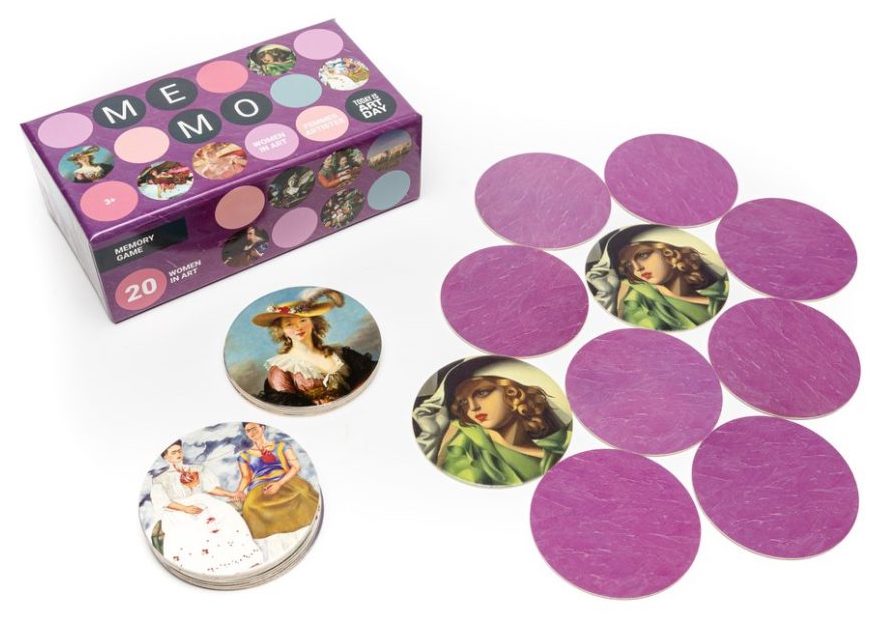
Find the matching tiles in this beautifully designed memory game! 20 Women in Art features female artists from the Renaissance to the twentieth century. Discover the artwork of Frida Kahlo, Mary Cassatt, Artemisia Gentileschi, Berthe Morisot, Tamara de Lempicka, Judith Leyster, Elisabeth Louise Vigée Le Brun and many more.
- The Birthday Box, with art by Poppy Crew, Monika Forsberg, Maya Hanisch, Beatrix Hatcher, and Lieke van der Vorst. Publisher: Princeton Architectural Press, 2020.

Select the perfect birthday card—from silly to sophisticated—from Princeton Architectural Press’ Birthday Box. Slide open the matchbox-style box to discover twenty designs and twenty envelopes in five bold colors that make these cards a joyful celebration from the moment they’re received. The designs are all by women artists.
Leonora Carrington’s Major Arcana, Introduced by Rachel Pollack. Publisher: Fulgur Press, 2020.

Accompanied by a new book (see below) about British-born artist Leonora Carrington (1917–2011)—one of the more fascinating figures to emerge from the Surrealist movement—Fulgur Press has created a slipcased limited edition of Leonora Carrington’s Major Arcana. For the first time, the press makes Carrington’s creation available as a working 22-card tarot deck. The set includes a booklet with an introductory essay by Rachel Pollack.
Fiction
- The Secret Life of Sofonisba Anguissola, by Melissa Muldoon. Publisher: Matta Press, 2020.
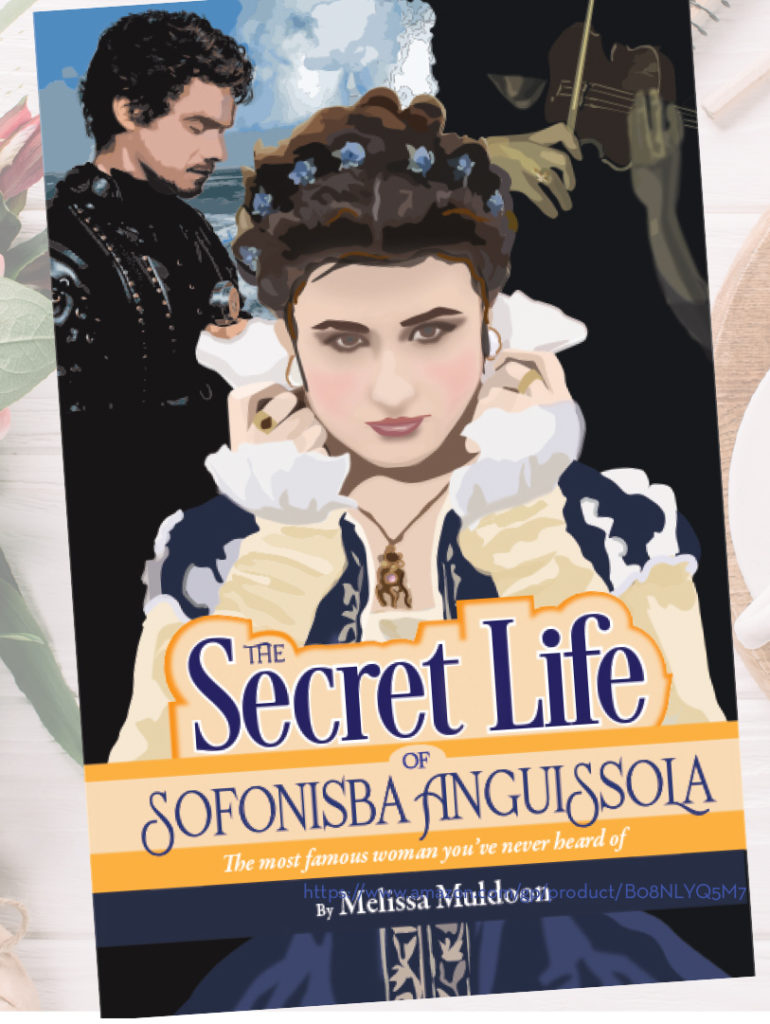
Set in the sixteenth century, The Secret Life of Sofonisba Anguissola tells the love story of a woman’s passion for art… and for a man. In a world where women painters had little to no acknowledgment, she was singled out by Michelangelo and Vasari, who recognized and praised her talent. She went on to serve in the Spanish court of King Philip II, where she taught his queen to paint. In a saga filled with intrigue, jealousy, buried treasure, unrequited love, espionage, and murder, Sofonisba’s story is played out against the backdrop of Italy, Spain, and Sicily. Throughout her life, she encounters talented artists, authoritative dukes, mad princes, religious kings, spying queens, vivacious viscounts, and dashing sea captains—even a Barbary pirate. But of all the people who fell in love with Sofonisba, only one captured her heart.
- Loving Modigliani: The Afterlife of Jeanne Hébuterne, by Linda Lappin. Publisher: Serving House Books, 2020.
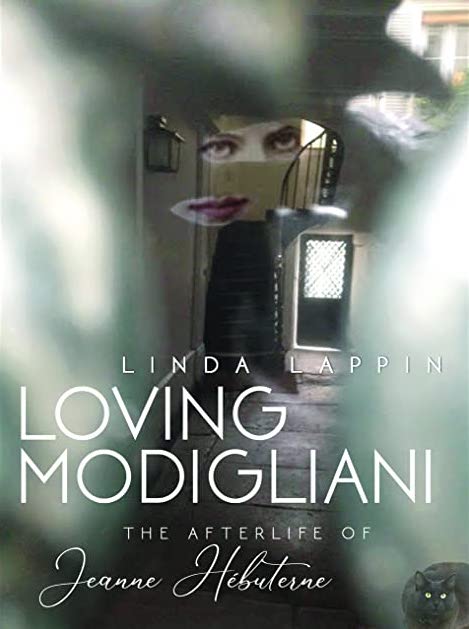
In this novel Jeanne Hébuterne, the young wife and muse of Amedeo Modigliani, dies 48 hours after her husband dies of meningitis; she falls backwards through a window. Now a ghost, Jeanne drifts about the studio she shared with Modigliani—for she was not only his favorite model, but also an artist whose works were later shut away from public view after her demise. Enraged, she watches as her belongings are removed from the studio and her identity as an artist seemingly effaced for posterity, carried off in a suitcase. Thus begins Loving Modigliani, which retells the story of Jeanne Hébuterne’s fate as a woman and an artist through three timelines and three precious objects stolen from the studio: a diary, a bangle, and Jeanne’s self-portrait with her family. A century later, Jeanne Hébuterne’s artwork will be rescued from oblivion.
Read reviews from Drēma Drudge, Historical Novel Society, and Kirkus Reviews.
For Young Readers
- Louise Bourgeois, by Maria Isabel Sanchez Vegara; illustrated by Helena Perez Garcia. Publisher: Frances Lincoln Children’s Books, 2020.
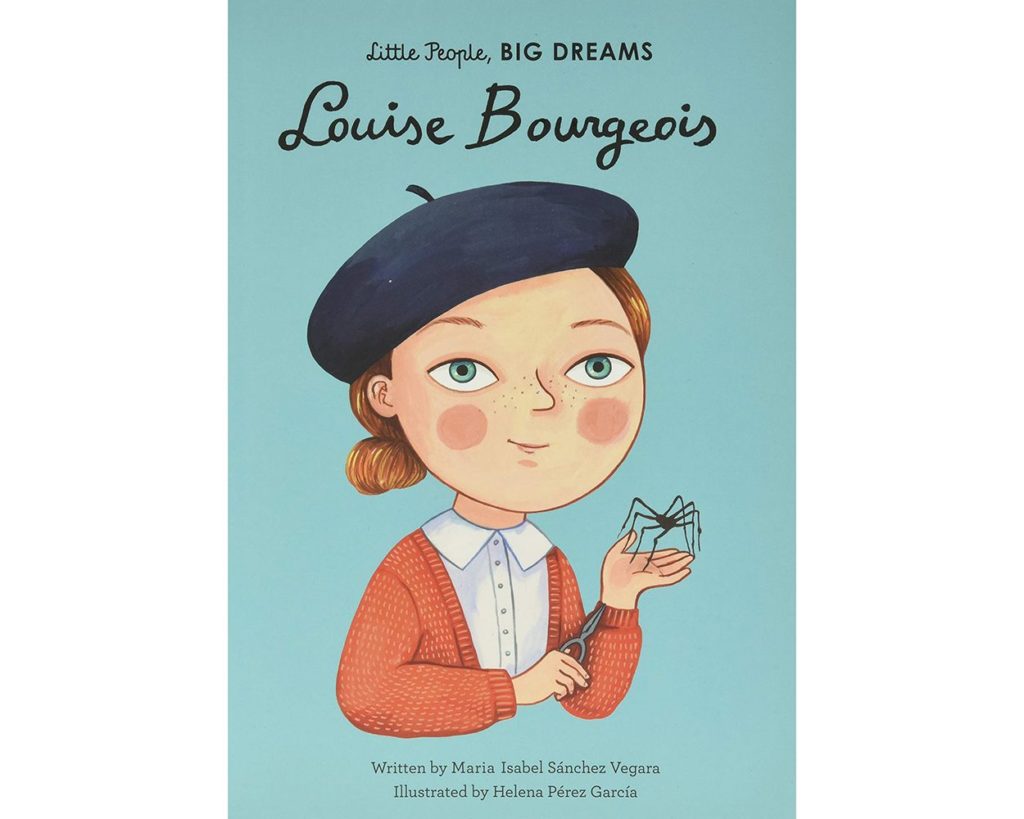
When Louise Bourgeois was a little girl, her mother died. She learned to express her feelings through drawing—and when she grew up, she turned these drawings into sculpture, confronting her own fears through art. This moving book features stylish and quirky illustrations and extra facts at the back, including a biographical timeline with historical photos and a detailed profile of the artist’s life.
Non-Fiction
- Lavinia Fontana’s Mythological Paintings: Art, Beauty and Wisdom, by Liana De Girolami Cheney. Publisher: Cambridge Scholars Publishing, 2020.
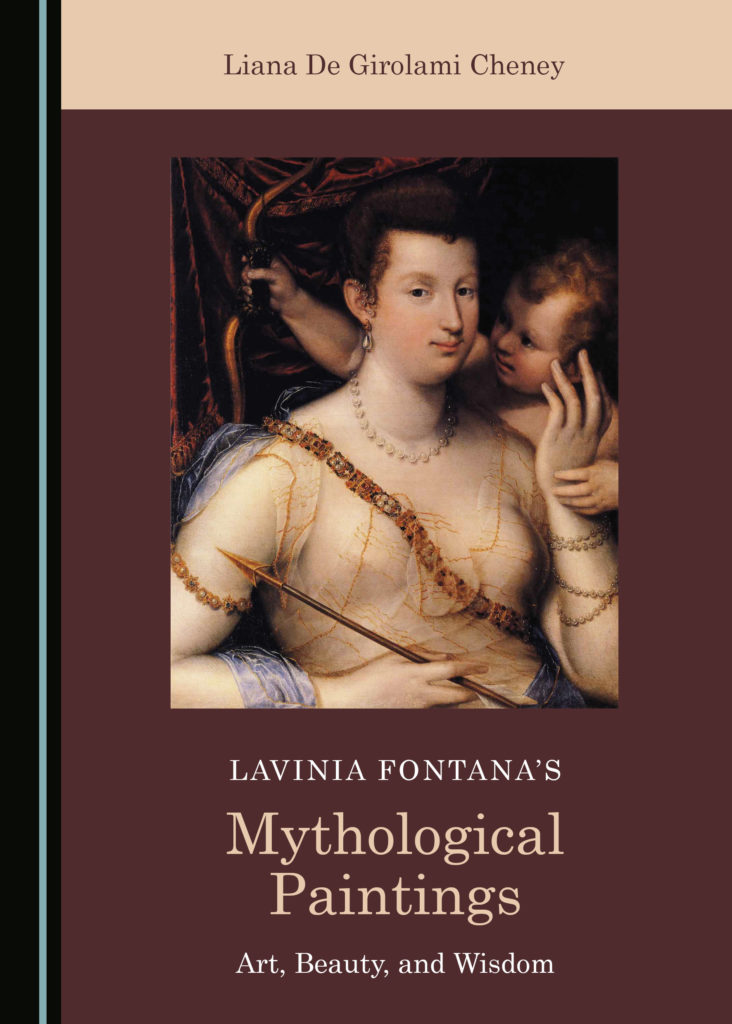
This volume investigates emblematic and art-historical issues in Lavinia Fontana’s mythological paintings. Fontana is the first female painter of the sixteenth century in Italy to depict female nudes, as well as mythological and emblematic paintings associated with concepts of beauty and wisdom. Her paintings reveal an appropriation of the antique, a fusion between patronage and culture, and a humanistic pursuit of Mannerist conceits. Fontana’s secular imagery provides a challenging paragone with the male tradition of history painting during the sixteenth century and paves the way for new subjects to be depicted and interpreted by female painters of the seventeenth century.
Read Eve Straussman-Pflanzer’s review of this book in caa.reviews.
- The Flowering of Ecology: Maria Sibylla Merian’s Caterpillar Book, by Kay Etheridge. Publisher: Brill, 2020.
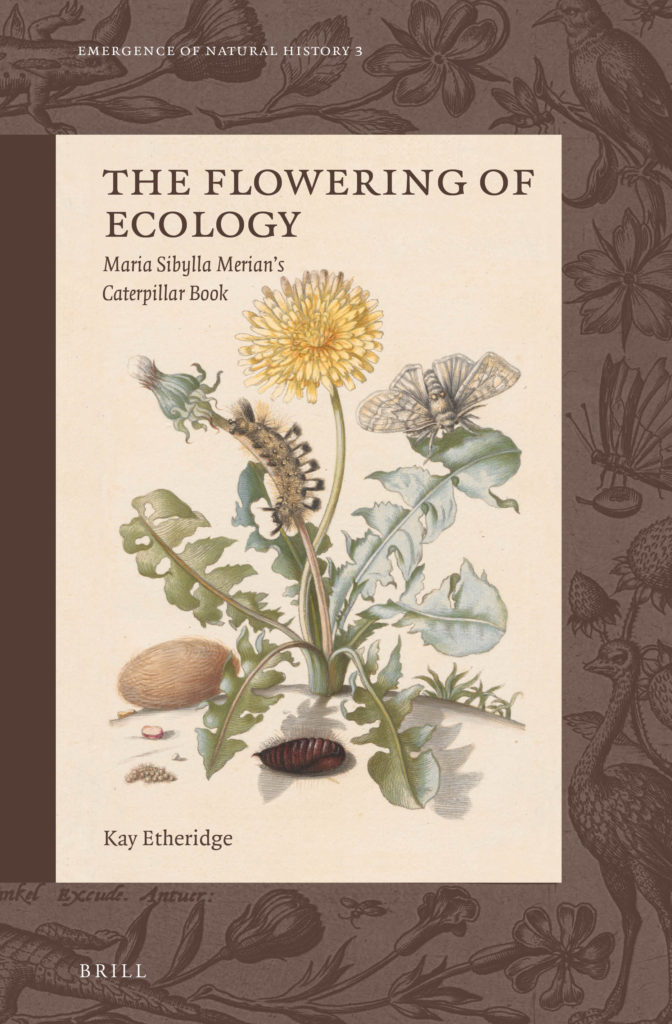
Maria Sibylla Merian raised insects for five decades, recording the food plants, behavior and ecology of roughly 300 species. Her most influential invention was an “ecological” composition in which the metamorphic cycles of insects (usually moths and butterflies) were arrayed around plants that served as food for the caterpillars. The Flowering of Ecology presents an English translation of Merian’s 1679 “caterpillar” book, Der Raupen wunderbare Verwandelung und sonderbare Blumen–Nahrung. Author Kay Etheridge analyzes the 1679 caterpillar book from the viewpoint of a biologist. She argues that Merian’s study of insect interactions with plants, the first of its kind, was a formative contribution to natural history.
- Frida Kahlo, by Hettie Judah. Publisher: Laurence King Publishing, 2020.
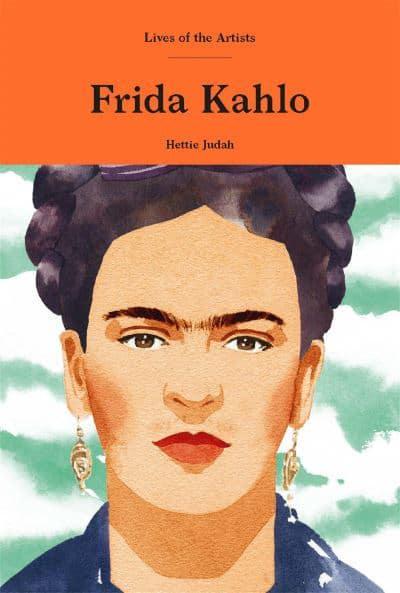
Fridamania has made Frida Kahlo’s image ubiquitous: she has been reborn as a Halloween costume, Barbie doll, children’s book character, textile print, phone cover, and the inspiration for everything from cocktails to fashion shoots. But it is more difficult to get a clear vision of this bold and brilliant, foul-mouthed, heavy-drinking, hard-smoking, husband-stealing, occasionally bisexual, often bed-bound, wheelchair-using, needy, forthright and passionate woman. Hettie Judah sets out to correct that with this superb biography of one of the most charismatic artists of the last hundred years.
- Marie Duval: Maverick Victorian Cartoonist, by Simon Grennan, Roger Sabin and Julian Waite. Publisher: Manchester University Press, 2021.

Marie Duval: Maverick Victorian Cartoonist offers the first critical appraisal of the work of Marie Duval (Isabelle Émilie de Tessier, 1847–1890), one of the most unusual, pioneering and visionary cartoonists of the later nineteenth century. It discusses key themes and practices of Duval’s vision and production, relative to the wider historic social, cultural and economic environments in which her work was made, distributed and read, identifing Duval as an exemplary radical practitioner. Marie Duval: Maverick Victorian Cartoonist establishes Duval as a unique but exemplary figure in a transformational period of the nineteenth century.
- Sarah Graham, by Ruth Building. Publisher: Ridinghouse Books. Distributor: Art Book D.A.P.
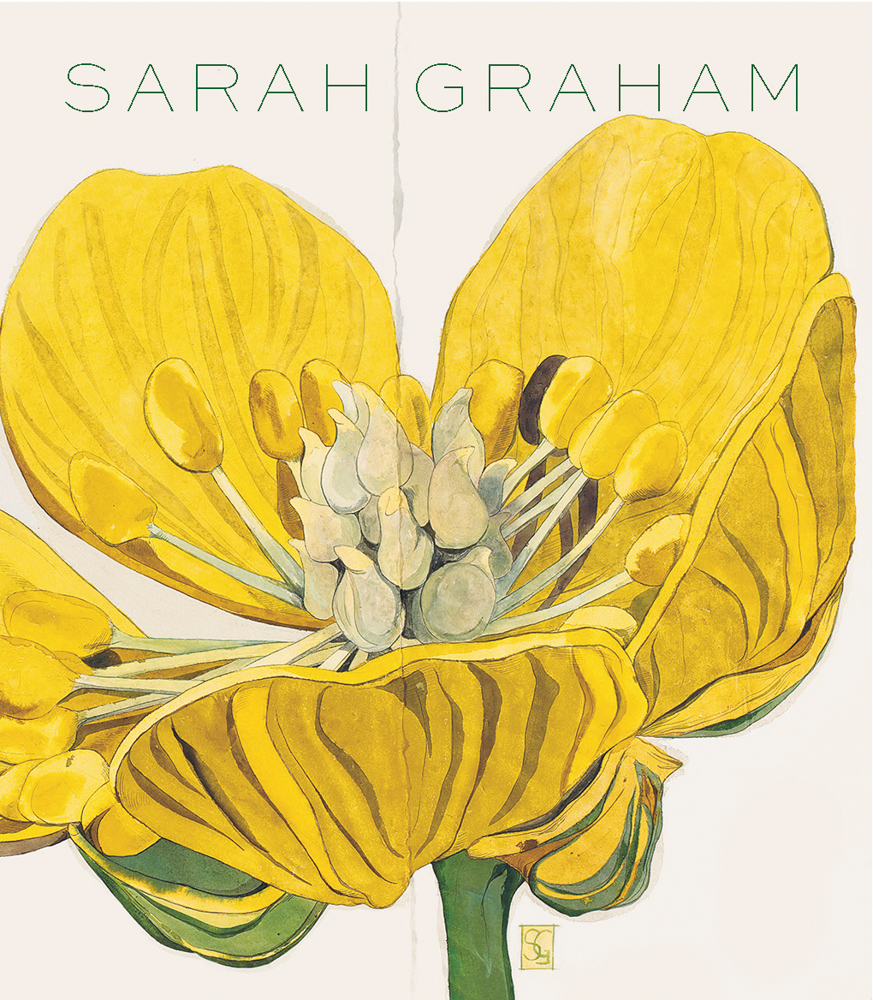
Scottish artist Sarah Graham sees the plant and insect world in close-up, through the prism of a naturalist and a traveller. Her work is shown internationally and is in the permanent collection of the Royal Botanical Gardens at Kew. This book handsomely presents Graham’s up-close drawings of insects and plants.
- Restless Enterprise: The Art and Life of Eliza Pratt Greatorex, by Katherine Manthorne. Publisher: University of California Press, 2020.
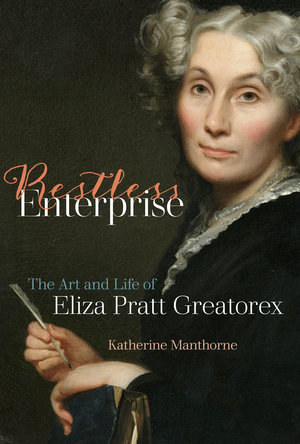
Eliza Pratt Greatorex (1819–1897) was America’s most famous woman artist in the mid-nineteenth century, but today she is all but forgotten. Beginning with her Irish roots, this biography brings her art and life back into focus. Breaking conventions for female artists at that time, Greatorex specialized in landscapes and streetscapes, traveling from the Hudson River to the Colorado Rockies and across Europe and North Africa. Her crowning achievement, a monumental tome of drawings and narratives titled Old New York, awakened the public to the destruction of the city’s architectural heritage during the post–Civil War era. Exploring Greatorex’s fierce ambition and creative path, Katherine Manthorne reveals how her success at forging an independent career in a male-dominated world shaped American gender politics, visual culture, and urban consciousness.
Read Bruce Weber’s review of this book for The Magazine Antiques here; and Andrea Pappas’ review for Panorama, here.
- The Female Secession: Art and the Decorative at the Viennese Women’s Academy, by Megan Brandow-Faller. Publisher: Penn State University Press, 2020.

Tracing the history of the women’s art movement in Secessionist Vienna—from its origins in 1897, at the Women’s Academy, to the Association of Austrian Women Artists and its radical offshoot, the Wiener Frauenkunst—Brandow-Faller tells the compelling story of a movement that reclaimed the stereotypes attached to the idea of Frauenkunst, or women’s art. She shows how generational struggles and diverging artistic philosophies of art, craft, and design drove the conservative and radical wings of Austria’s women’s art movement apart and explores the ways female artists and craftswomen reinterpreted and extended the Klimt Group’s ideas in the interwar years.
- Truth Bomb: Inspiration from the Mouths and Minds of Women Artists, by Abigail Crompton. Publisher: Thames & Hudson, 2020.

This colorful compilation of pioneering and established women artists from around the world motivates and empowers. Their stories and artworks in this volume challenge readers to find solace in the shared human experiences of birth, death, love, anger, joy, and sadness. Truth Bomb offers the best commentary and insight into the incredible formation of diverse women artists such as Yayoi Kusama, Miranda July, Mickalene Thomas, and the Guerrilla Girls while uncovering the power of taking a chance, pushing the envelope, and ultimately not being afraid of making a mark. Each artist tells a story of resilience, tenacity, sacrifice, and steely determination. The result is a magical visual mash-up of images, memories, historic moments, interviews, and inspirational beginnings as told by artists themselves. Truth Bomb is an ode to art and artists and an attempt to decipher the mystery of creativity.
- The Tarot of Leonora Carrington, by Susan Aberth and Tere Arcq, with an introduction by Gabriel Weisz Carrington. Publisher: Fulgur Press, 2020.
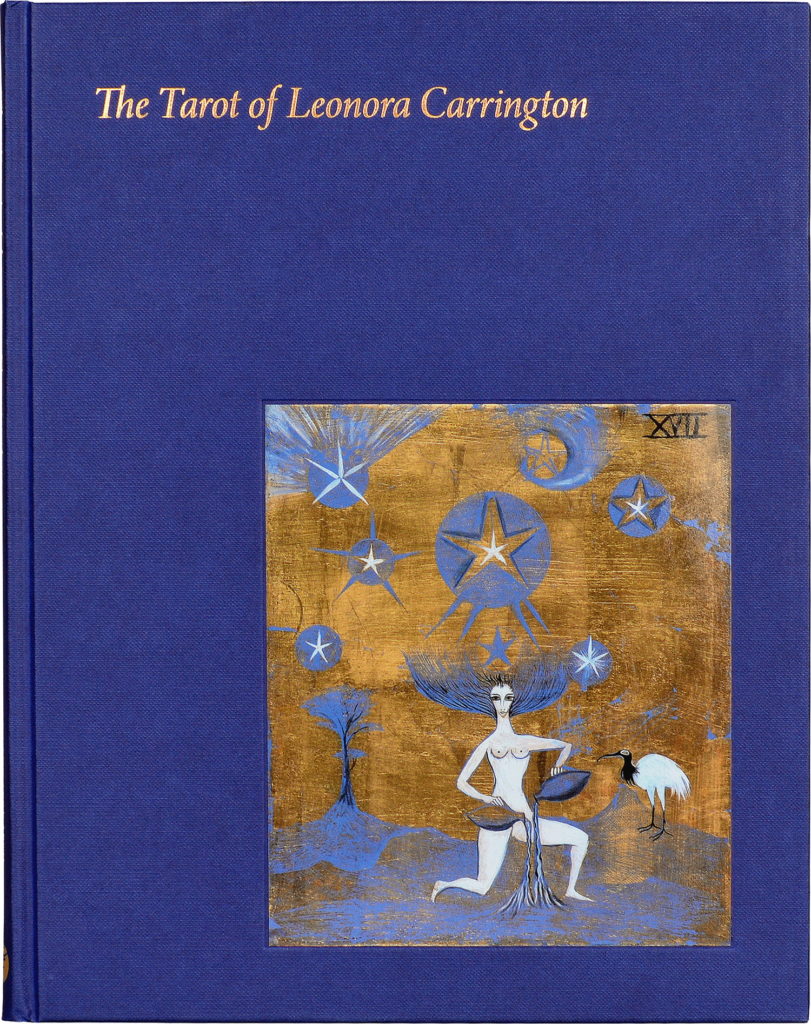
The magical themes of Carrington’s otherworldly paintings are well-known, but the recent discovery of a suite of tarot designs she created for the Major Arcana was a revelation for scholars and fans of Carrington alike. This tantalising discovery, made by the curator Tere Arcq and scholar Susan Aberth, has placed greater emphasis upon the role of the tarot in Carrington’s creative life and has led to fresh research in this area. The Tarot of Leonora Carrington is the first book dedicated to this important aspect of the artist’s work. It includes a full-size facsimile of her newly discovered Major Arcana.
- Paper Bullets: Two Artists Who Risked Their Lives to Defy the Nazis, by Jeffrey H. Jackson. Publisher: Workman Publishing, 2020.
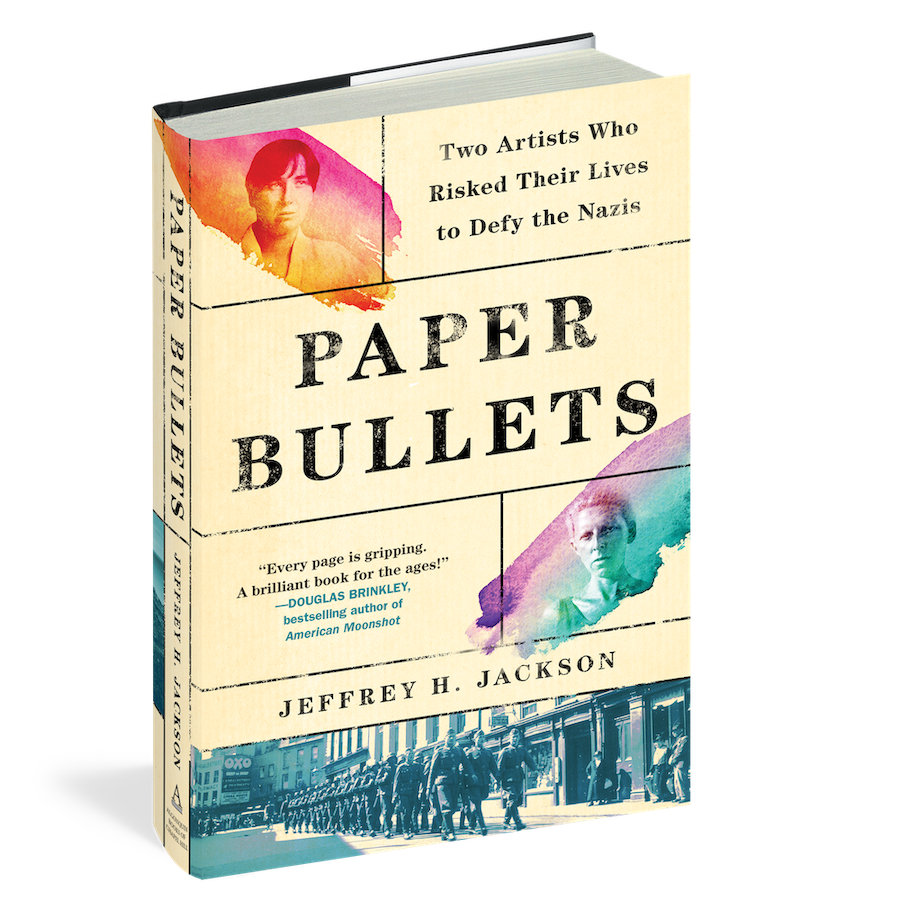
Paper Bullets is the first book to tell the history of an audacious anti-Nazi campaign undertaken by an unlikely pair: two French women, Lucy Schwob and Suzanne Malherbe—better remembered today by their artist names, Claude Cahun and Marcel Moore. The couple’s actions were even more courageous because of who they were: lesbian partners known for cross-dressing and creating the kind of gender-bending work that the Nazis would come to call “degenerate art.” In addition, Lucy was half Jewish, and they had communist affiliations in Paris, where they attended political rallies with Surrealists and socialized with artists like Gertrude Stein.
This book has been selected for the longlist for the 2021 Andrew Carnegie Medals for Excellence in Fiction and Nonfiction. Read Deborah Hopkinson’s review for Book Page here, and Candy Bedworth’s review for Daily Art Magazine here.
- Anni & Josef Albers: Equal and Unequal, by Nicholas Fox Weber. Publisher: Phaidon, 2020.
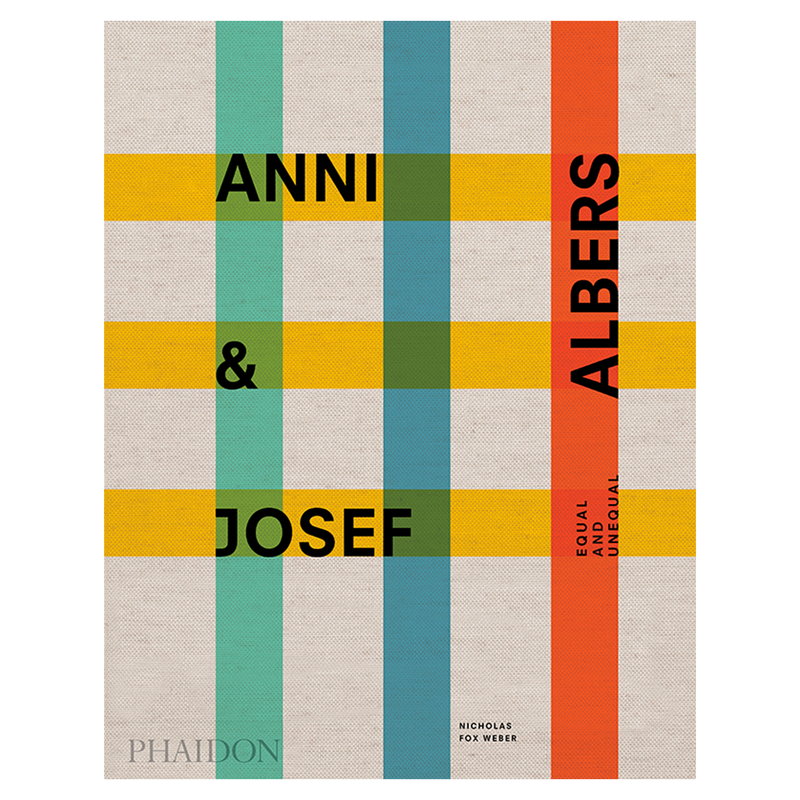
A “spectacular and unprecedented visual biography of the leading pioneers and protagonists of modern art and design,” is both an important art-history document and a touching biography. The author, Nicholas Fox Weber, is the long-standing executive director of the Albers Foundation. He fills the book’s pages with both personal recollections and meticulous research.
- Designing a New Tradition: Loïs Mailou Jones and the Aesthetics of Blackness, by Rebecca VanDiver. Publisher: Penn State University Press, 2020.

In Designing a New Tradition, Rebecca VanDiver presents a fresh perspective on the art and career of Loïs Mailou Jones. Considering the importance of Africa for Jones’s work and examining the broader roles played by class, gender, and politics in constructions of African American art histories as a whole, VanDiver makes a convincing case for Jones’s lasting place in American art history.
There is a new (December 11, 2020) episode about Loïs Mailou Jones on The Great Women Artists podcast, in which Katy Hessel interviews Rebecca VanDiver, the author of this book.
- The Art and Architecture of Lauretta Vinciarelli, by Rebecca Siefert. Publisher: Lund Humphries, 2020.

This book presents the first comprehensive study of Vinciarelli’s work in art and architecture, offering a unique lens through which to reassess the revival of architectural drawing in the late 1970s as connected to larger theoretical, pedagogical, and political aims to shed new light on this electrifying period. More than simply a book of reclamation, Into the Light argues that Vinciarelli is an overlooked missing link in the exchange between Italy and the United States at a pivotal point in contemporary architecture, in the architectural drawings revival of the 1970s as connected to the socio-political context of Italy, and in the historiography of Minimalism.
Read the review of Into the Light in A Daily Dose of Architecture Books.
- Cecily Brown, by Courtney J. Martin, Jason Rosenfeld & Francine Prose. Publisher: Phaidon, 2020.
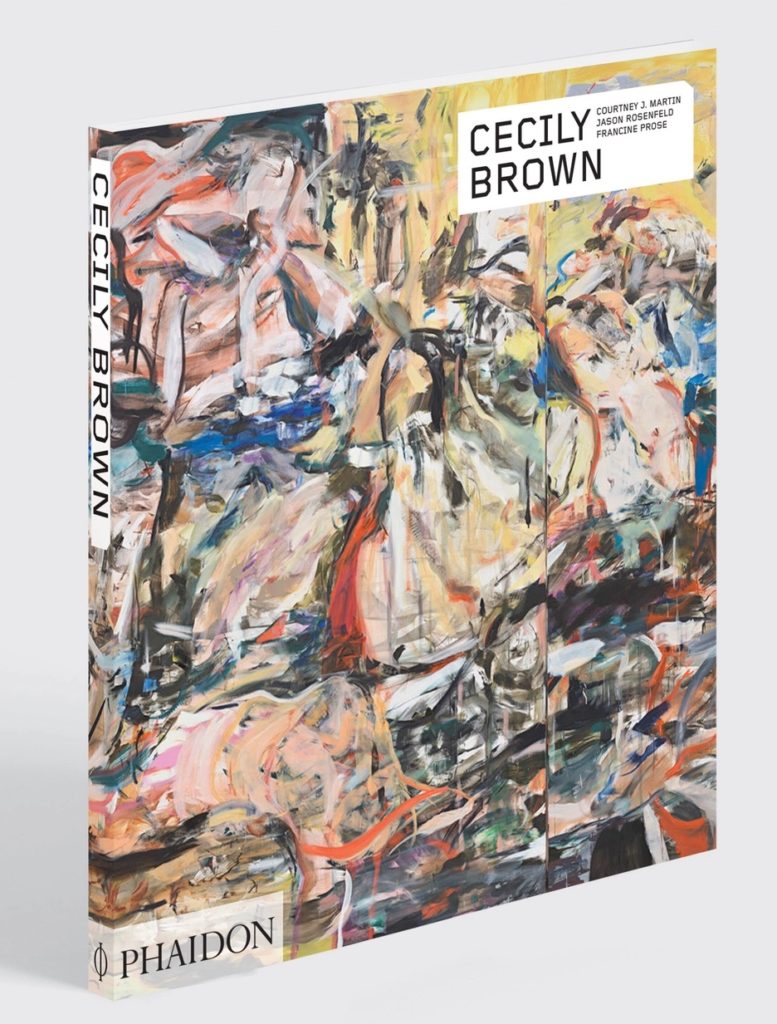
Cecily Brown is a British-born, New York-based artist who rose to prominence in the late 1990s. Originally influenced by Abstract Expressionism, Brown has over the years developed her unique voice, which investigates the sensual qualities of oil paint through a process inspired both by abstraction and realism. Through a range of reference to old master paintings and popular culture, Brown’s symbolic language, exuberant brushwork, rich palette, intense energy, and embrace of the erotic have boldly redefined some of painting’s historical canons.
- Bisa Butler: Portraits, edited by Erica Warren; With contributions by Bisa Butler, Jordan Carter, Isabella Ko, Erica Warren, and Michele Wije. Publisher: The Art Institute of Chicago, 2020.
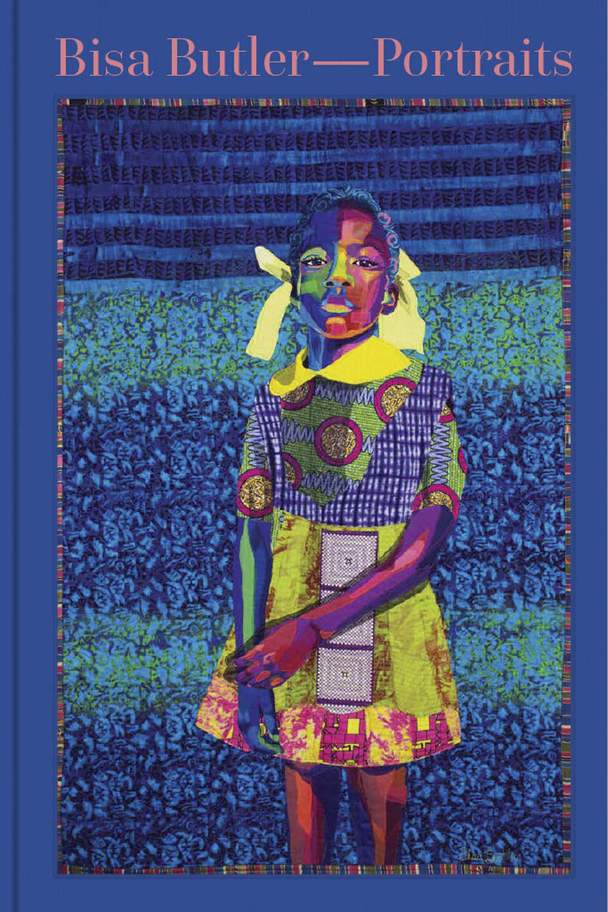
Bisa Butler (b. 1973) is an American artist who creates arresting and psychologically nuanced portraits composed entirely of vibrantly colored and patterned fabrics that she cuts, layers, and stitches together. Often depicting scenes from African American life and history, Butler invites viewers to invest in the lives of the people she represents while simultaneously expanding art-historical narratives about American quilt making. Situating her interdisciplinary work within the broader history of textiles, photography, and contemporary art, contributions by a group of scholars—and entries by the artist herself—illuminate Butler’s approach to color, use of African-print fabrics, and wide-ranging sources of inspiration. The first monograph on one of America’s most innovative contemporary artists, this volume will serve as a primary resource that both introduces Butler’s work and establishes a scholarly foundation for future research.
- Faux Pas: Selected Writings and Drawings, by Amy Sillman. Publisher: After 8 Books, 2020.

A key figure in the New York art scene, Amy Sillman is renowned for her singular approach to painting and drawing. Her writings extend a practice that challenges traditions and theoretical frameworks with criticality and humor, and advocates subjectivity: she reevaluates Abstract Expressionism with a queer eye, explores the meanings of color and shape, and discusses in depth the work of other artists—from Delacroix to Maria Lassnig to Laura Owens. In Faux Pas, a collection of her most recent essays, alongside her cartoons and original drawings, art—as personal as it is political—is a practice that responds to today’s struggles.
Re-issued, or issued in a new format:
- Old Mistresses: Women, Art and Ideology, by Roszika Parker and Griselda Pollock. Publisher: Bloomsbury, 2020.
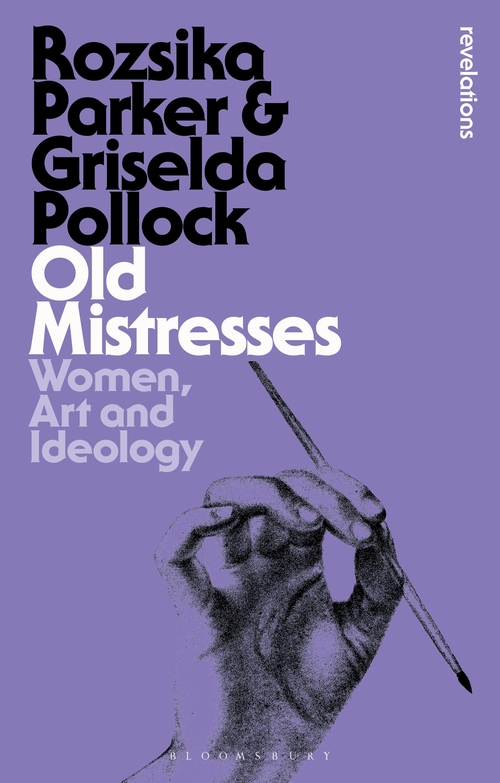
Bloomsbury Publishing has reissued the classic book Old Mistresses: Women, Art and Ideology, with a new preface by Griselda Pollock. Pollock was recently awarded the Holberg Prize in recognition of her outstanding contribution to research and her influence on thinking on gender, ideology, art and visual culture worldwide for over 40 years.
- Collector’s Library of Modern Women Artists from Eiderdown Books:
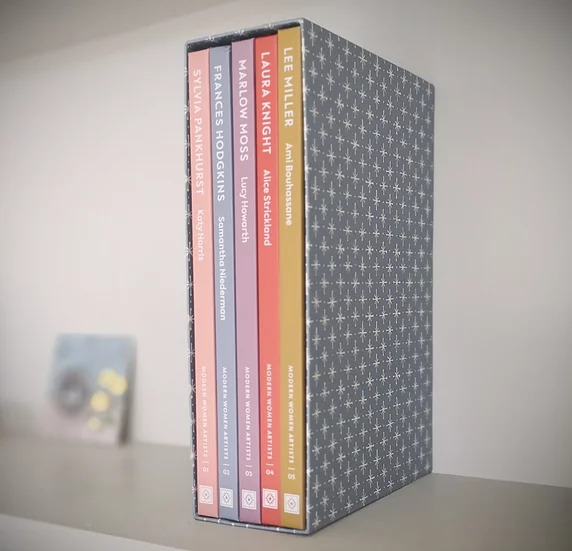
A special limited edition collector’s library slipcase handmade in the UK using a paper wrap from Cambridge Imprint, filled with the first five books from the Modern Women Artists series. This series of collectable books reveals an alternative history of art, telling the story of important female artists whose art might otherwise be overlooked, overshadowed or forgotten.
Similar Art Herstory posts:
New Books about Women Artists | Jan–March 2022
New Books About History’s Women Artists | Oct–Dec 2021
New Books About History’s Women Artists | July–Sept 2021
New Books About History’s Women Artists | Jan–March 2021
Art Herstory’s Women Artists Favorite Things, 2020 Edition
New Books About History’s Women Artists | July–Sept 2020
New Books About History’s Women Artists | Apr–Jun 2020
New Books About History’s Women Artists | Jan–Mar 2020
Ten Intriguing Books About Remarkable Women Artists, a guest post by Carol M. Cram




